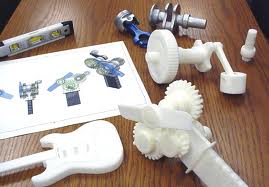By Doug Stephens
Technology has given rise to a steady evolution whereby consumers are increasingly becoming producers. Music, publishing, printing, design, software development, and video are only a few of the areas that have been touched by this rapid transformation. With it has come massive economic disruption as entire industries, like the printing industry for example, have felt the effects of the “pro-sumer” movement. But what if we could take it a step further and move from being mere producers of data, media and content to becoming manufacturers of actual physical products?
Imagine a world where we can quite effortlessly produce many of the household items we need on a daily basis, such as tools, household accessories, toys etc., What if many of these things could be manufactured in the comfort of our own home. Imagine having the ability to create the things we need, as we need them, one at a time in any design we prefer.
Now, what if I told you that what I just described is not only possible, but that by 2020 it could be commonplace?
Welcome to the world of 3-D printing.
3D printers create objects by stacking layers of material – often metal or plastics – onto one another in the form of the desired object. Designs are based on three dimensional digital models that can be created using simple and accessible software.
Originally used by manufacturers to build expensive prototypes, the technology is quickly scaling down in affordability with commercial grade 3D printers available on the market for as little as $15,000.00 and a low-end desktop unit for as little as $1,200.00. And while that might still sound like a pretty steep price tag, consider that the first Sony Betamax retailed for well over $1,000.00 in 1975 dollars, a price seen as prohibitive by many consumers at the time.
While the widespread household use of 3D printing could take a while to catch on, it’s fascinating to consider the radical impact such a change could have on our economy and the manufacturing in general. How many items that we rely on a supply chain of businesses to produce, could simply be made as needed by consumers themselves?
It’s also fascinating to think about how this technology could be used by children for play and education. Could 3D printing be the 21st century version of the chemistry set or Lego kit?
Here’s a video with more on 3D printing technology and it’s potential to change our lives.
[youtube]http://www.youtube.com/watch?v=Q-uhoww_W_I[/youtube]


